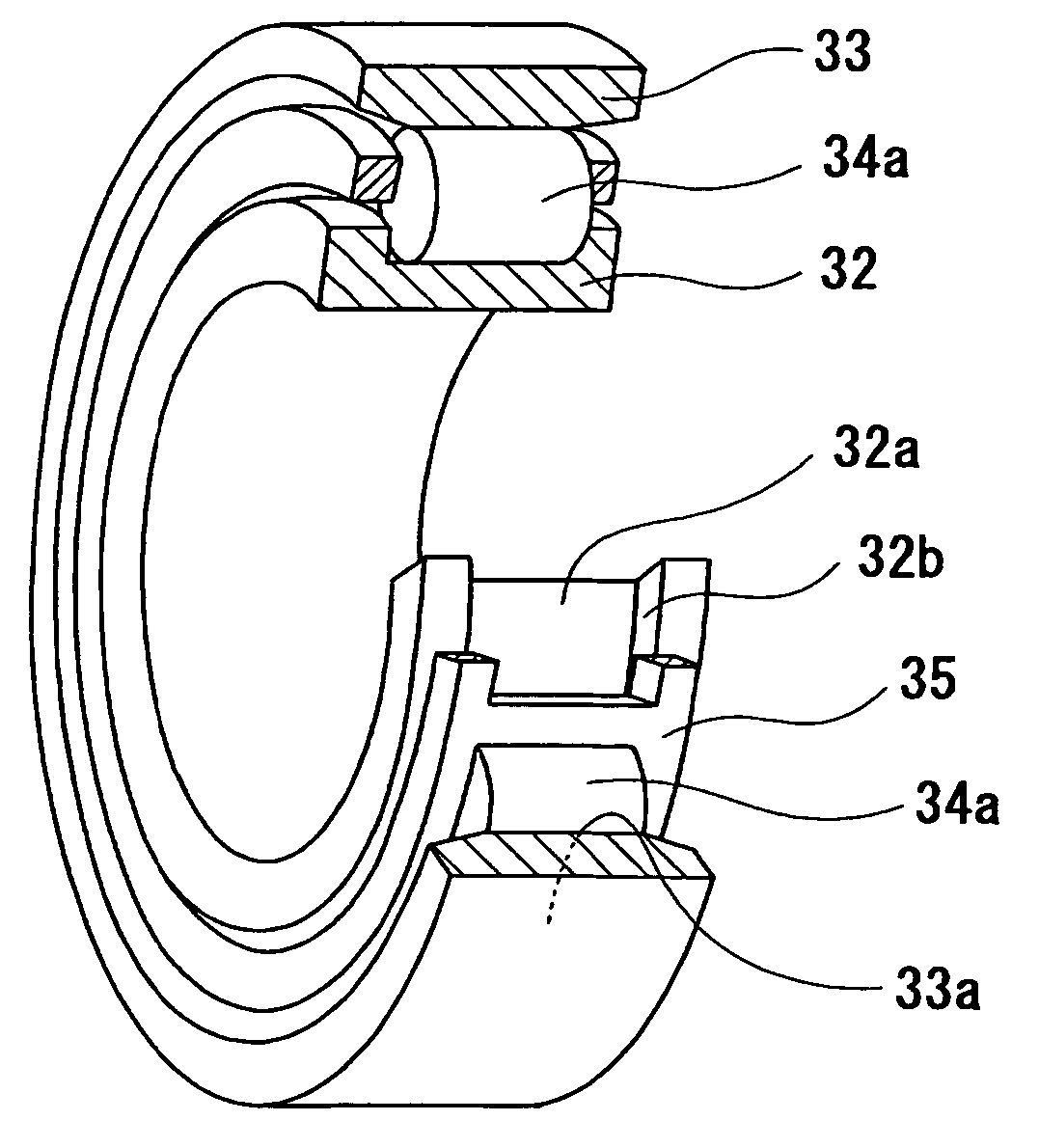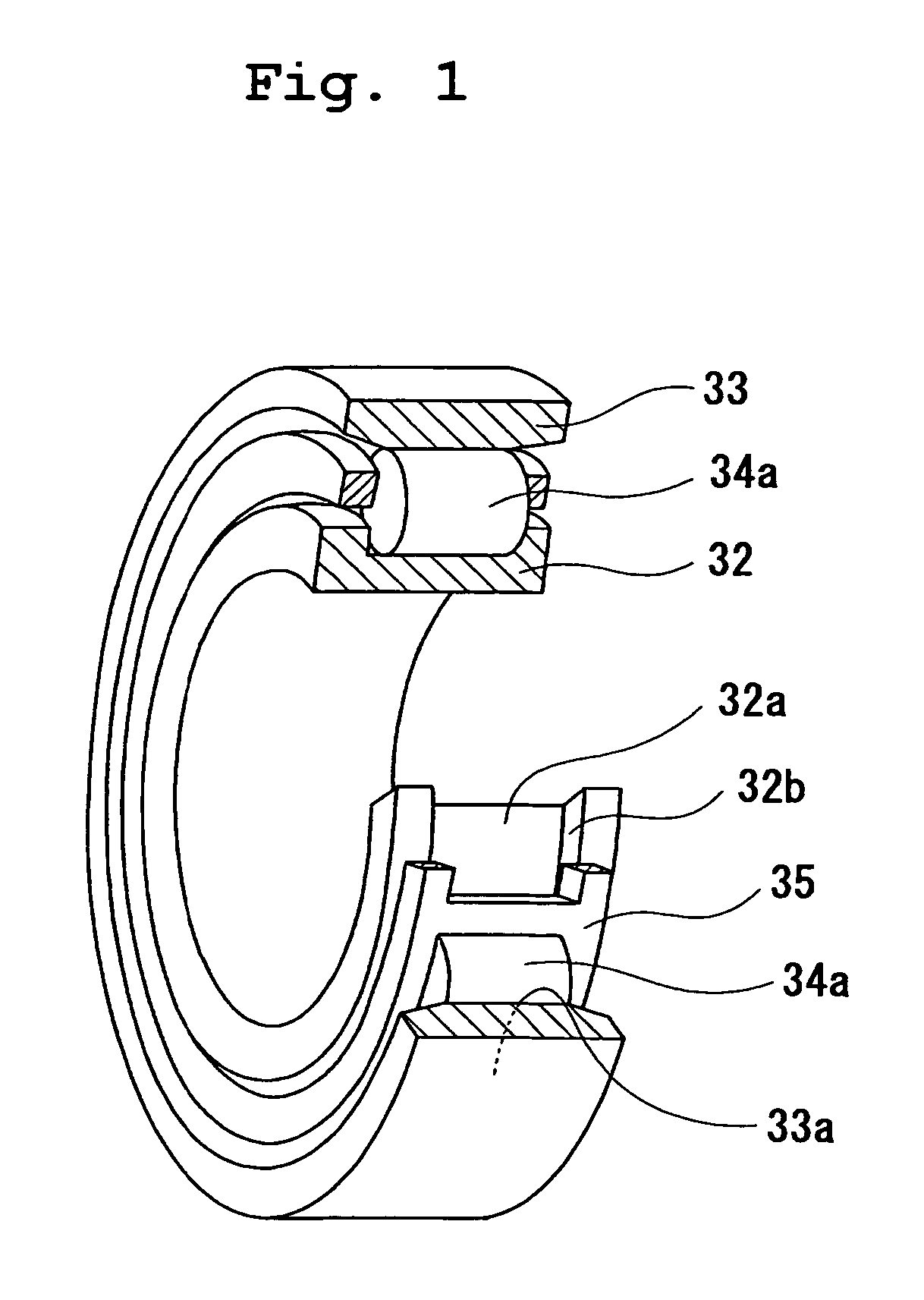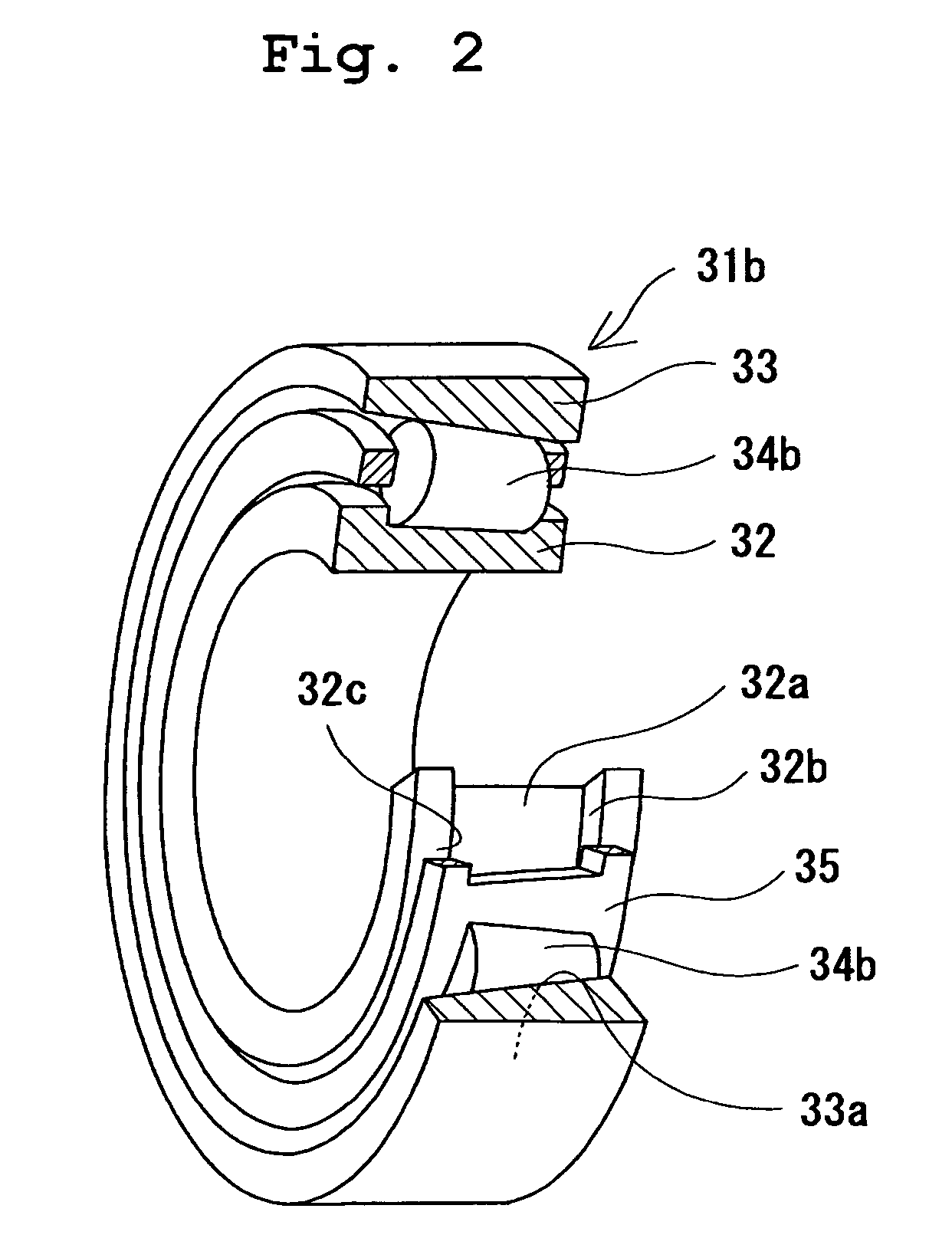Grease, rolling bearing, constant velocity joint, and rolling parts
a technology of constant velocity joint and grease, which is applied in the field of grease, can solve the problems of increasing heat generation and frictional wear, reducing disadvantage, and prone to fracture of the lubricating film of the lubricating grease, so as to prevent the occurrence of flaking, improve the resistance to heat and durability, and prevent the effect of frictional wear on the lubricating surfa
- Summary
- Abstract
- Description
- Claims
- Application Information
AI Technical Summary
Benefits of technology
Problems solved by technology
Method used
Image
Examples
examples 1 through 11
[0265]In a reaction container, as shown in table 1, a thickener was added to base oil, and uniformalizing treatment was performed by using a triple roll mill to obtain lithium soap / mineral oil-based grease (viscosity of base oil at 40° C.: 100 mm2 / s, mixing consistency: 220), urea / PAO oil-based grease (viscosity of base oil at 40° C.: 46 mm2 / s, mixing consistency: 280), lithium soap / ester oil-based grease (viscosity of base oil at 40° C.: 33 mm2 / s, mixing consistency: 250), and urea / ether oil-based grease (viscosity of base oil at 40° C.: 100 mm2 / s, mixing consistency: 300).
[0266]Further, as an extreme-pressure agent, bismuth or inorganic bismuth was added to the above-described grease at rates shown in table 1 to form grease of each example. On the obtained grease, an extreme-pressure property evaluation test and a test of a roller bearing were conducted. Results are shown in table 1.
example 12
[0284]A copper plate (SUJ2, thickness: 10 mm) and a ring-shaped specimen (SUJ2) of φ40 mm×thickness of 10 mm were immersed in a solution containing 5 g of the bismuth trioxide (produced by Wako Pure Chemical Industries, Ltd.) and 95 g of PAO oil (SYNFLUID 801 produced by Nippon Steel Chemical Co., Ltd.) to which the bismuth trioxide was added. The ring-shaped specimen was rotated at 2000 rpm for 20 hours with an end surface of the ring-shaped specimen pressed against the copper plate at a load of 490 N. By frictional heat generated at that time, a coating film of the bismuth trioxide was formed on the end surface of the ring-shaped specimen. The formation of the coating film of the bismuth trioxide on the end surface of the ring-shaped specimen was confirmed by surface analysis performed by means of Photoemission Spectroscopy (hereinafter referred to as XPS).
[0285]By using two ring-shaped specimens, an extreme-pressure property evaluation test shown below was conducted. Results are ...
example 13
[0286]The copper plate (SUJ2, thickness: 10 mm) and the ring-shaped specimen (SUJ2) of φ40 mm×thickness: 10 mm were immersed in a solution containing 5 g of bismuth (produced by Wako Pure Chemical Industries, Ltd.)and 95 g of the PAO oil (SYNFLUID 801 produced by Nippon Steel Chemical Co., Ltd.) to which the bismuth was added. The ring-shaped specimen was rotated at 2000 rpm for 20 hours with the end surface of the ring-shaped specimen pressed against the copper plate at a load of 490 N. By frictional heat generated at that time, a coating film of the bismuth was formed on the end surface of the ring-shaped specimen. The formation of the coating film of the bismuth on the end surface of the ring-shaped specimen was confirmed by the surface analysis performed by means of the XPS.
[0287]By forming two ring-shaped specimens, an extreme-pressure property evaluation test shown below was conducted. Results are shown in FIG. 14.
PUM
| Property | Measurement | Unit |
|---|---|---|
| kinematic viscosity | aaaaa | aaaaa |
| kinematic viscosity | aaaaa | aaaaa |
| thickness | aaaaa | aaaaa |
Abstract
Description
Claims
Application Information
 Login to View More
Login to View More - R&D
- Intellectual Property
- Life Sciences
- Materials
- Tech Scout
- Unparalleled Data Quality
- Higher Quality Content
- 60% Fewer Hallucinations
Browse by: Latest US Patents, China's latest patents, Technical Efficacy Thesaurus, Application Domain, Technology Topic, Popular Technical Reports.
© 2025 PatSnap. All rights reserved.Legal|Privacy policy|Modern Slavery Act Transparency Statement|Sitemap|About US| Contact US: help@patsnap.com



